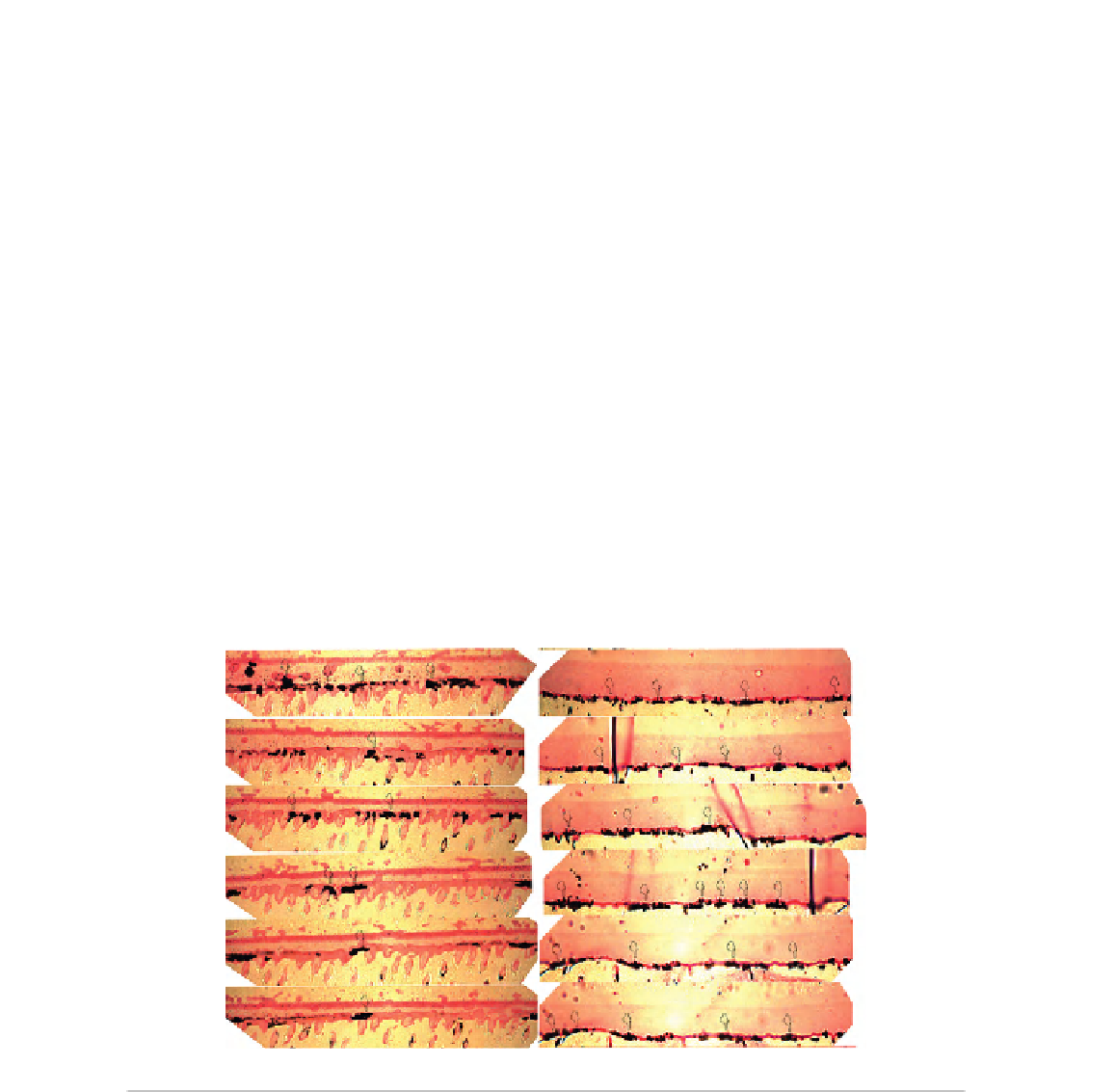Biomedical Engineering Reference
In-Depth Information
stabilize the hybrid layer over time, i.e., etch-and-rinse three steps and self-etch two-step adhesives
should be preferred to simplified ones. Also applying a hydrophobic layer on one-step self-etching
adhesives could improve bond strength and durability
[55]
.
7.8.2
Extended polymerization time
Extending the curing times of simplified adhesives beyond those recommended by the manufac-
turers resulted in improved polymerization and reduced permeability and appears to be a possible
means for improving the performance of these adhesives
[56]
.
7.8.3
Use of MMPs inhibitors
The use of MMPs inhibitors as additional primer has been claimed to reduce interfacial aging over
time by inhibiting the activation of endogenous dentin enzymes which are responsible for the deg-
radation of collagen fibrils in the absence of bacterial contamination
[57]
. The recent finding that
chlorhexidine (CHX) also has potent anti-MMP-2, -8, and -9 activity encouraged some researchers
to determine whether CHX could stabilize the organic matrix of resin
dentin bonds. This led to
numerous in vitro
[58]
and in vivo studies
[59]
that demonstrated that CHX has beneficial effects
on the preservation of resin
dentin bonds, thereby offering a valuable alternative to clinicians who
seek to delay the degradation process of adhesive restorations. The effectiveness of CHX, as an
antimicrobial or an antiproteolytic agent, has been reported to be related with its substantivity to
oral/dental structures
[60]
. Substantivity is the prolonged association between a material (e.g.,
(A)
Galardin-treated specimens
(B)
Control specimens
FIGURE 7.23
Much less nanoleakage as demonstrated by silver depositions with galardin-treated specimens (A). Compared
with non treated specimens (B).

